Mastering The Deadlift – A Complete How-To Guide
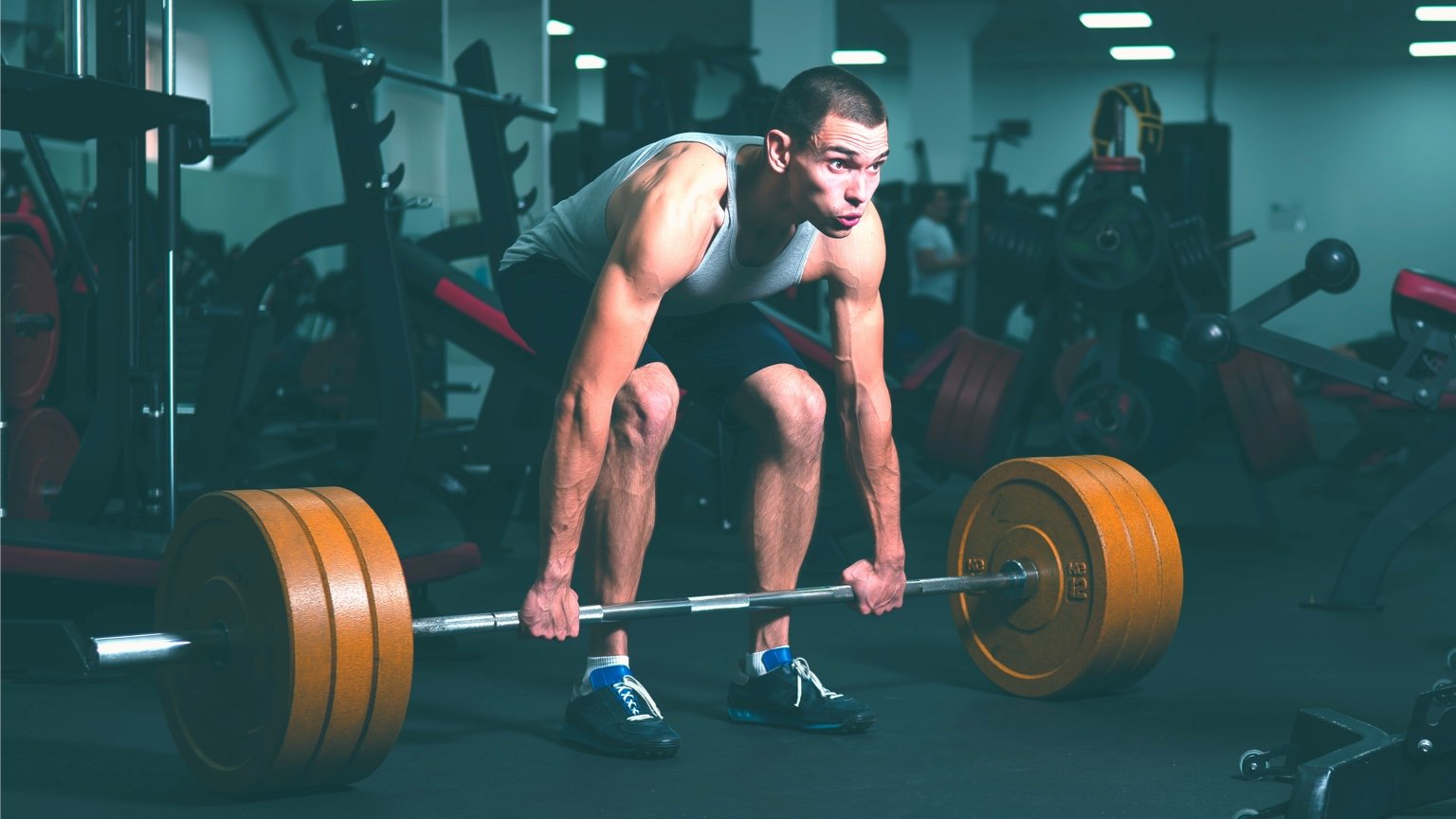
The deadlift is one of the primary powerlifting exercises, where you lift a loaded barbell off the ground and, while straightening your back and legs, lift to a point of lockout. Deadlifts work a wide range of muscle groups, including your hamstrings, glutes, back and core muscles. Deadlifts are a simple exercise, and are useful to both beginners and seasoned weightlifters in terms of building overall strength and stability.
Because deadlifts emphasize heavy lifting, they are a great exercise to increase overall strength, improve bone health and increase metabolic function. A 2011 study indicates that regular resistance training including deadlifts can improve bone mineral density in men, while a 1994 study makes the link between high-resistance strength training and increases in metabolic rate.
Deadlifts and an important exercise to consider adding to your strength training workouts. Other powerlifting exercises are the bench press and squat.
Which muscles does the deadlift work?
Deadlifts provide a full body workout, in particular working your entire posterior chain (the muscles on the back of your body). They effectively engage your leg muscles (hamstrings, quads), glutes, lower and upper back muscles, as well as your shoulders and arms.
Among your upper and mid-back muscles, deadlifts effectively work your traps and lats. Trapezius muscles are key muscles any lifting or pulling exercise, and your lats help you pull the barbell off the floor. They also play a key role in stabilizing your core.

Your erector spinae muscles, a group of muscles that run along your spine, are also engaged through a deadlift movement. These muscles help you keep a straight back through the movement and assist in the lift.
In addition, the deadlift also works the muscles in your back, abs, hips and adductor magnus. Key abdominal muscles, the rectus abdominis, transverse abdominis, and obliques, stabilize your core throughout the exercise. Hip muscles, including the hip flexors and gluteus maximus, are responsible for hip extension and are a key group of muscles that help you lift the barbell off the ground.
Your adductors, which are your inner thigh muscles, help stabilize your hip and contribute to hip flexion. This helps you maintain proper form during the movements.
Benefits of deadlifts
Building strength and muscle mass
Being a compound movement, deadlifts engage multiple muscle groups at the same time. This makes deadlifts an effective exercise for building overall body strength and increasing muscle mass.
In particular, deadlifts target the legs, glutes and hamstrings, which are key parts of your posterior chain. Your posterior chain, meaning the group of muscles on the backside of your body, are crucial for improving athletic performance in activities like running and jumping, and help you maintain good posture during exercise. Strengthening this group of muscles can help you prevent injuries in other workouts.
When performed frequently and with the proper form, deadlifts can sculpt strong legs and a firm butt.
Working stabilizing muscles
Because deadlifts engage multiple muscle groups at the same time, particularly stabilizing muscles around the core, abs, shoulders and upper back, they can improve the stability of your trunk, as well as your overall coordination and agility.
Helping with everyday activities
The muscles you use in a deadlift happen to be the same muscles that you use in everyday activities, for example lifting heavy objects. So performing deadlifts can improve your overall strength which is needed in tasks like carrying groceries, children, etc. As well as making these tasks easier, you also reduce the risk of injury in everyday activities and other workouts.
Joint stability
Deadlifts contribute to better joint stability and an increased range of motion in your hips and knees. Performing deadlifts regularly works the ligaments and tendons surrounding the knees and other joints, reducing stress on your joints and promoting overall joint health and resilience. And because deadlifts require full hip extension, they can improve your overall flexibility and range of motion in your hips.
Equipment needed
The only equipment you need to perform a deadlift is a barbell. Most variations of deadlift use a barbell, but it’s also possible to do a deadlift with dumbbells, a kettlebell or a trap bar.
Each choice of weight equipment has its own benefits. Dumbbells allow a greater range of motion, increase muscle engagement and promotes development of balanced strength. Dumbbells are also more accessible and portable than a barbell, making it a great choice for home workouts.
Variations of deadlift
There are a many variations of deadlift, including:
- Traditional deadlift. Standard deadlift starting from the floor, where you lift the barbell until you are standing upright.
- Romanian deadlift. The deadlift starts from a standing position and you lower the barbell down by hinging your hips. This type of deadlift targets your hamstrings and glutes, and places less emphasis on your quads.
- Stiff-leg deadlift. Similar to a traditional deadlift except your knees, although slightly bent, remain fixed throughout the movement. This type of deadlift places greater emphasis on your hamstrings and lower back.
- Dumbbell deadlift. If you don't have access to a barbell, you can also perform deadlifts with dumbbells. This may limit your range of motion compared with traditional deadlifts, and you generally are limited to how much weight you can lift.
- Kettlebell deadlift. Similar to dumbbell deadlifts, except performed with a single kettlebell. Kettlebell deadlifts may be an easier exercise for beginners.
- Trap bar deadlift. The trap bar allows you to maintain a more upright torso. This can help you lift heavier loads than would be possible with traditional deadlifts.
- Sumo deadlift. In a sumo deadlift, you stand with your feet wider apart than you would in a traditional deadlift. Sumo deadlift places greater emphasis on your glutes and inner thighs due to the wider stance.
- Single leg deadlift. Because this type sees you lift on one leg, it requires greater balance and stability. There's a higher risk of injury with this type of deadlift, so it's important to use the proper form and start with a lighter weight compared to traditional deadlifts.
Each variation of deadlift targets your body’s muscles differently, and some may be easier to perform than others. So it’s important to choose your form of deadlift carefully, taking into account your ability, current strength levels and fitness goals.
If you have any physical limitations, you should take this into account. For example, the trap bar deadlift may be a better option if you have any lower back issues.
The Romanian and Stiff-leg deadlift keep your legs relatively straight throughout the motion, which make them a great option if you want to emphasize working your hamstrings or lower back.
The Romanian deadlift places less pressure on your lower back compared to the traditional deadlift. This variation uses a reduced range of motion, with your torso upright. You may want to consider Romanian’s if you have any lower back pain and wish to continue doing deadlifts. As always, it’s important to perform any exercise with proper form and consult a medical professional if you have any existing pain or physical issues.
If, however, your goal is to strengthen your lower back, the traditional deadlift may be the better option for you. Traditional deadlifts engage a wider range of muscles, including the erector spinae. The full range of motion in the traditional deadlift encourages greater activation of muscles in your lower back.
Traditional deadlift
How to do a traditional deadlift
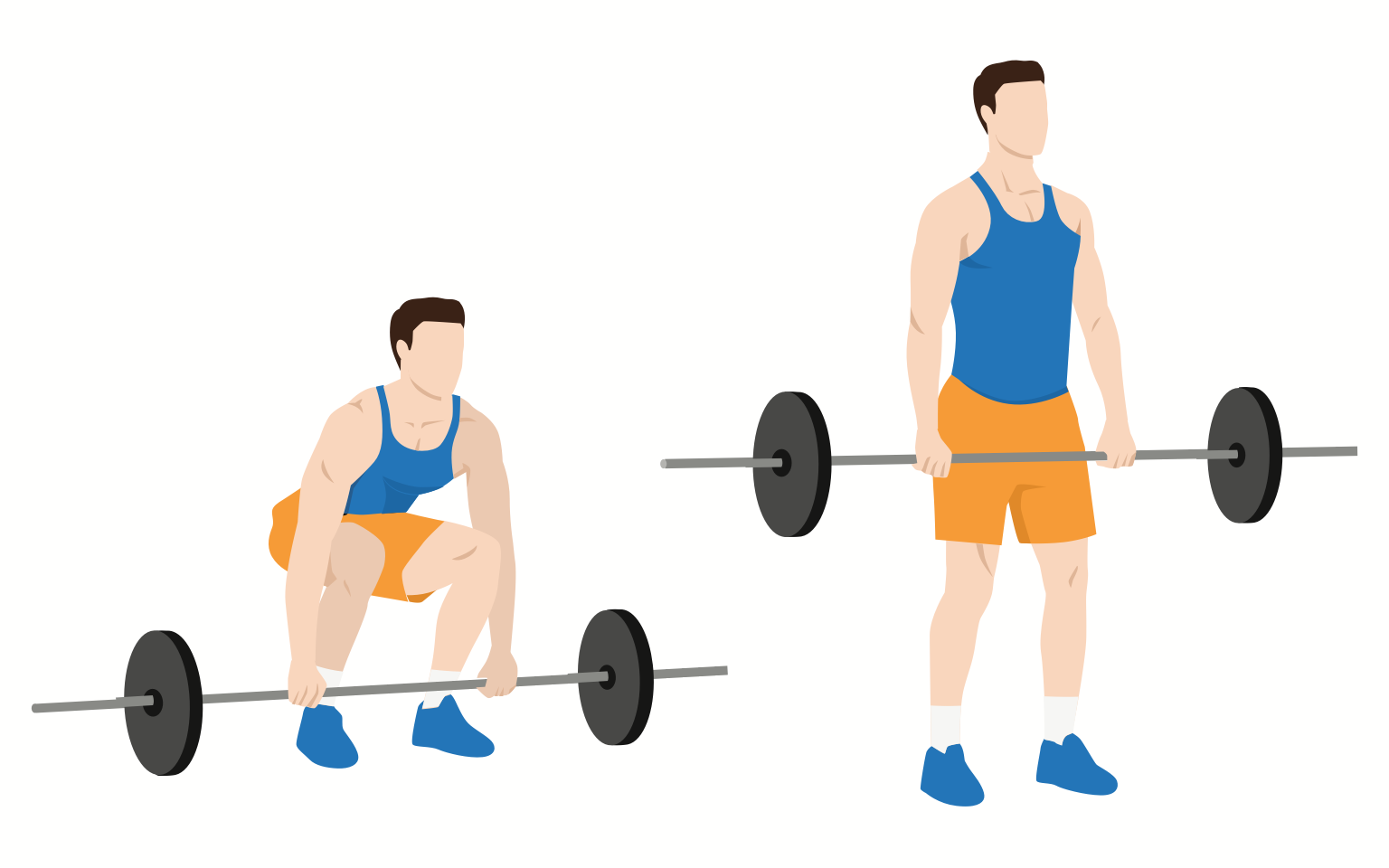
- Stand with your feet shoulder-width apart. Your toes should point forwards or slightly outwards.
- Position the barbell with your toes underneath the bar, with your shins almost touching the bar.
- Raise up your chest and push your hips back slightly to maintain a neutral spine. Avoid rounding or excessively arching your back.
- With proper form, squat down towards the barbell. With your knees slightly bent, hinge at your hips and sit back. Bend forward at your waist, keeping your chest up and back straight.
- Reach forward and grip the barbell. Use either an overhand (both palms towards you) or mixed (one palm in, one out) grip. Your hands should be positioned just outside of your legs.
- Take a deep breath, keeping your core engaged.
- Now, initiate the lift by pushing upwards with your legs. The power in this movement should come from your legs and hips, not your lower back. Keep the bar to your body, and keep your chest up.
- Raise the bar past your knees. Exhale towards the top of the lift. Press your hips forward and straighten up to complete the lift. The last step of the deadlift is a lockout - straighten your back and legs and stand upright, with your shoulders back and down, chest out and your hips and knees fully extended.
- To lower the bar back to the floor, push your hips back, keeping your chest up with a neutral spine. Bend your knees, keeping them in line with your feet. Lower the bar slowly, keeping it close to your shins. Place the bar back gently on the floor.
Sets and reps
As part of a workout routine including deadlifts, aim to complete 3-4 sets of 2-6 reps each. This is a good approach to both build strength and improve endurance. As always, it’s important to use the proper form, so adjust the sets, reps and weight depending on your existing strength and ability.
Proper form and safety
Arms and back
The deadlift is not a pull motion. Instead, you push from your legs and hips. Your arms should remain extended under tension, but your arms should not actively be moving the weight during the exercise. Be mindful of your arms’ position as bent arms will put additional strain on your biceps which can lead to injury.
Keep bar close to body
During a deadlift, the barbell should stay close to your body throughout the lift. It is natural for the bar to scrape against your shins. If the bar is too far from your body, it can cause additional strain on your back.
Rounding your back
Keep your back straight and maintain a neutral spine throughout the movement. Rounding your back with a heavy load can lead to serious injury. Always prioritize safety rather than trying to maximize the load you are lifting. A flat back and neutral spine keens the weight evenly distributed for an efficient lift.
Some people do prefer to use a slightly rounded back, but too much rounding can put stress on your spine, potentially leading to injury.
Hinge at your hips
The proper deadlift form sees you hinge at your hips. Your hips should move backward when lowering the barbell and forwards when lifting the weight. Using your hips as a hinge is critical source of power for the lift and reduces the risk of injury.
Avoid bending your knees excessively, as this will shift the focus from your back and hips to your legs. If this happens, the barbell can drift forwards which makes the movement less efficient and can be dangerous.
Abdominal bracing
For a safe and efficient deadlift, maintain tension in your abs. This will form a brace around your spine and support your neutral position.
The Valsalva maneuver may provide additional core stability during your lift, according to a 2013 study that concluded that "[the Valsalva maneuver] effectively increases [intra-abdominal pressure] which may assist with spine stability and trunk rigidity during resistance exercise. The health risks associated with the VM during resistance exercise remain unconfirmed."
Romanian deadlift (RDL)
The Romanian deadlift starts from a standing position, unlike a traditional deadlift which starts the lift from the ground. This variation is safer for those who have lower back pain, since it places less strain on your lower back than traditional deadlifts. It’s a good exercise for targeting your glutes and increasing your hip mobility.
If you suffer from back pain, or have any medical or physical injury or are pregnant, you should consult your doctor or another suitably qualified professional before undertaking any form of exercise.
The Romanian deadlifts targets your hamstrings, glutes, forearm flexors. It is a good exercise for increasing overall strength and stability. Start with a lighter weight and increase as your strength improves.
How to perform a Romanian deadlift
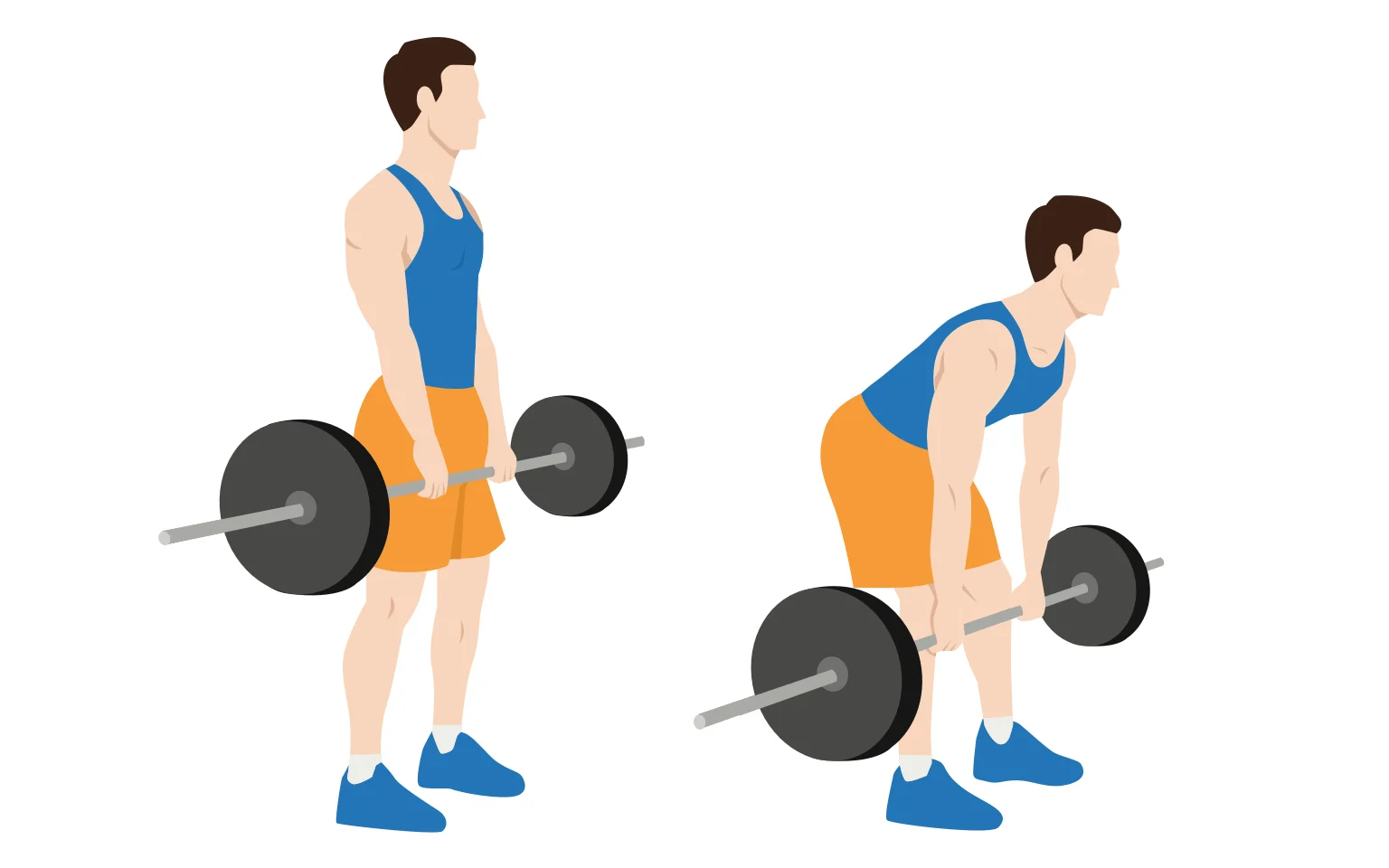
- Stand tall, with your feet hip-width apart. With an overhand grip (palms facing body), hold the barbell at hip level. Keep your shoulders back and maintain a straight spine.
- Pushing your hips back, lower the barbell towards your feet. Keep your spine straight and keep your head up throughout the movement.
- As the barbell reaches shin level, press your hips forward to return to the standing position. The barbell should finish in front of your thighs.
Stiff-leg deadlift
The stiff-leg deadlift is a type of deadlift where you remain standing throughout the movement. This variation engages a wide range of muscle groups, builds and strengthens your core muscles and improves your balance and stability.
As a comprehensive lower-body exercise, stiff-leg deadlifts are good for emphasizing your glutes, hamstrings and calves. Regularly doing stiff-leg deadlifts can enhance your lower body strength and posture. Because of this, they can contribute to more powerful squats and leg strength.
Proper form is key for stiff-leg deadlifts, as they can present a higher risk of lower-back injury if you do not perform them correctly.
How to do a stiff-leg deadlift
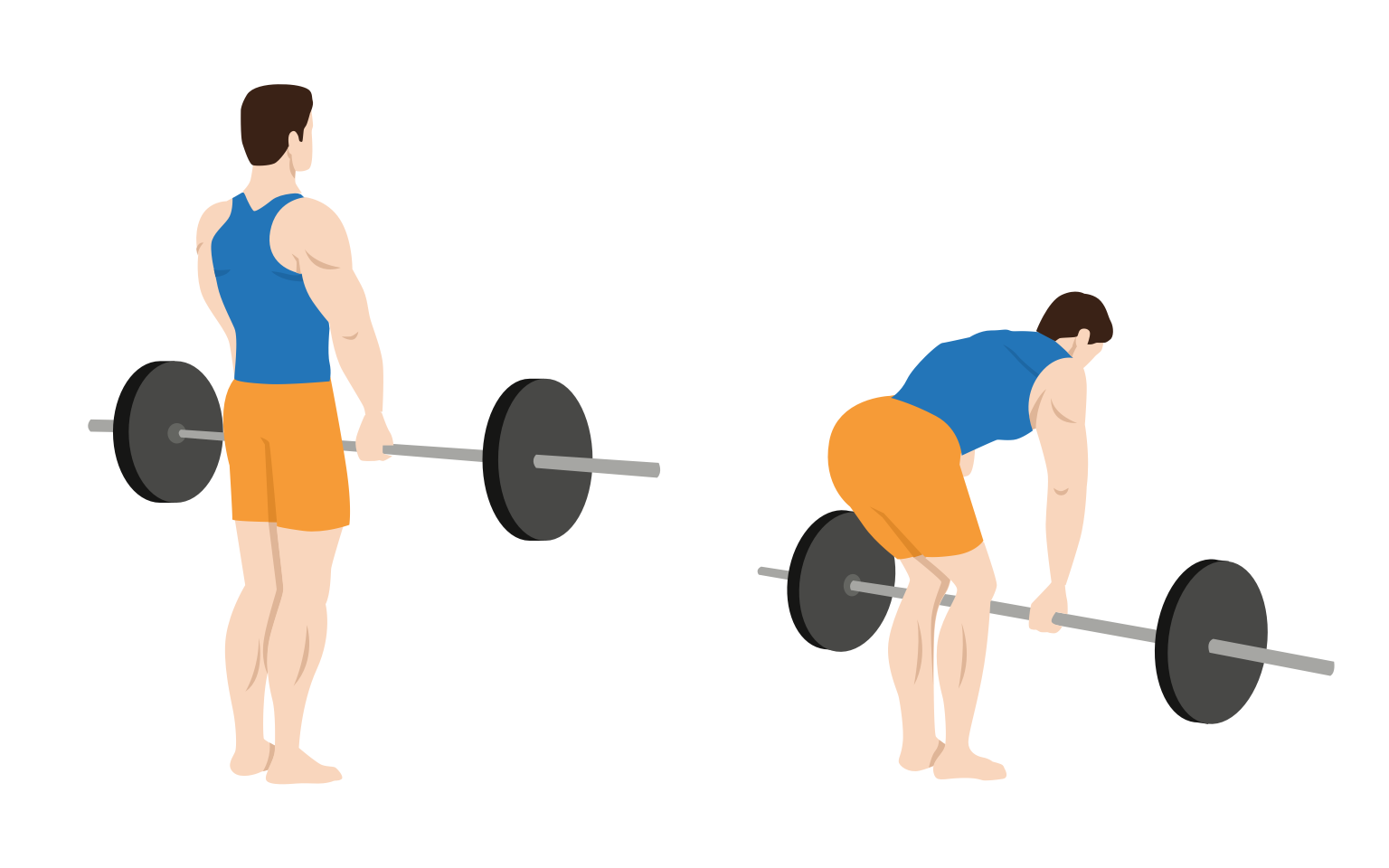
- Stand straight with your feet shoulder-width apart. Your legs should be mostly straight with a slight bend in your knees. Maintain a neutral spine. Do not round your back during the exercise.
- With an overhand grip, grip the bar with your hands slightly wider than shoulder width. The bar should be against your thighs. Keep the bar close to your body throughout the movement.
- With your legs and back straight, bend forward at your hips and lower the bar along your legs until you feel a stretch in your hamstrings.
- Contract your hamstrings and glutes to reverse the motion, returning to the standing position.
Dumbbell deadlift
If a barbell is not available, you can also perform deadlifts using dumbbells or a kettlebell.
Dumbbells work each side of the body independently, so can be useful if you have a muscular imbalance. As such, this variation is a good way to improve your overall muscle development.
You can perform dumbbell deadlifts with one hand or two hands. One hand dumbbell deadlift focuses on individual muscle groups and can be useful to address imbalances. Two hand dumbbell deadlift promotes overall muscle growth and development.
A related variation called single-leg deadlift sees you stand on one leg while performing the movement.
How to do a dumbbell deadlift
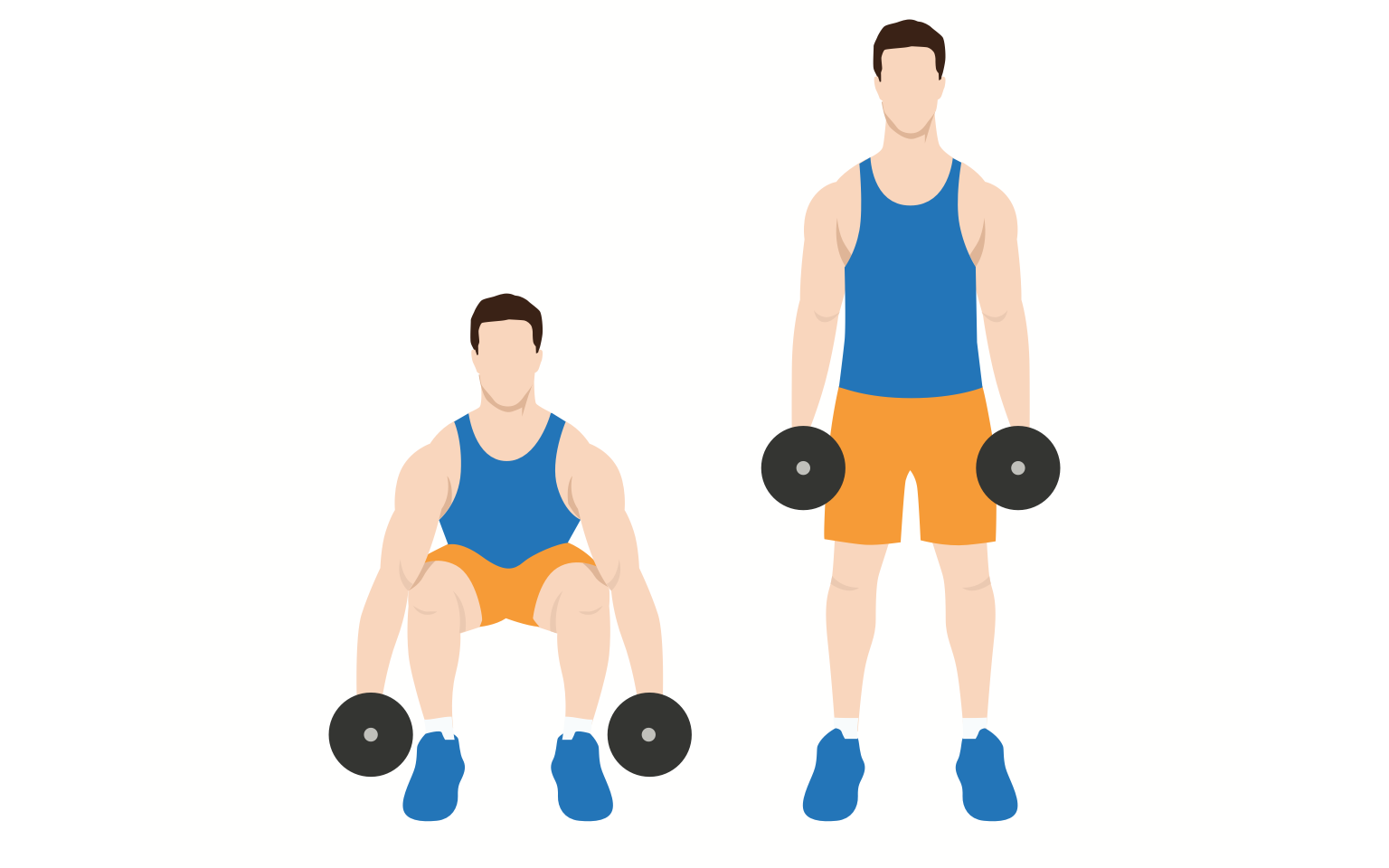
- Stand with your feet shoulder-width apart.
- Hold a dumbbell in each hand in front of your thighs. Use an overhand grip (palms facing your body).
- Pull back your shoulders and keep your core engaged throughout the movement.
- Pushing your hips back, lower the dumbbells just below your knees. Then allow your knees to bend slightly and lower the dumbbells further towards the floor.
- Push through your feet to reverse the movement, driving your hips forward, and return to the standing position.
Types of deadlift grip
There are two types of deadlift grip.
- Overhand grip. This is the most popular grip, where both of your palms face down. Overhand grip allows for a balanced distribution of weight. This grip is more suitable for lower weight sets, however you should prefer this type of grip whenever possible, since it helps you maintain proper form.
- Mixed grip. Mixed grip uses one hand supinated (palm facing up), with the other pronated (palm facing down). This type of grip is suitable for heavier weights and reduces the risk of the barbell ‘rolling’ when you lift. The rolling risk is higher when you lift heavy weights.

You can also adjust the width of your grip on the barbell. A wide grip engages your back muscles further, but requires a greater degree of shoulder mobility and strength. Narrower grip engages your triceps more.
Think about your current strength and goals when choosing between overhand and mixed grip, and deciding on the best grip width.
References
Almstedt, H. C., Canepa, J. A., Ramirez, D. A., & Shoepe, T. C. (2011). Changes in bone mineral density in response to 24 weeks of resistance training in college-age men and women. The Journal of Strength & Conditioning Research, 25(4), 1098-1103.
Pratley, R., Nicklas, B., Rubin, M., Miller, J., Smith, A., Smith, M., … & Goldberg, A. (1994). Strength training increases resting metabolic rate and norepinephrine levels in healthy 50-to 65-yr-old men. Journal of Applied Physiology, 76(1), 133-137.
Hackett, D. A., & Chow, C. M. (2013). The Valsalva maneuver: its effect on intra-abdominal pressure and safety issues during resistance exercise. Journal of strength and conditioning research, 27(8), 2338-2345.
